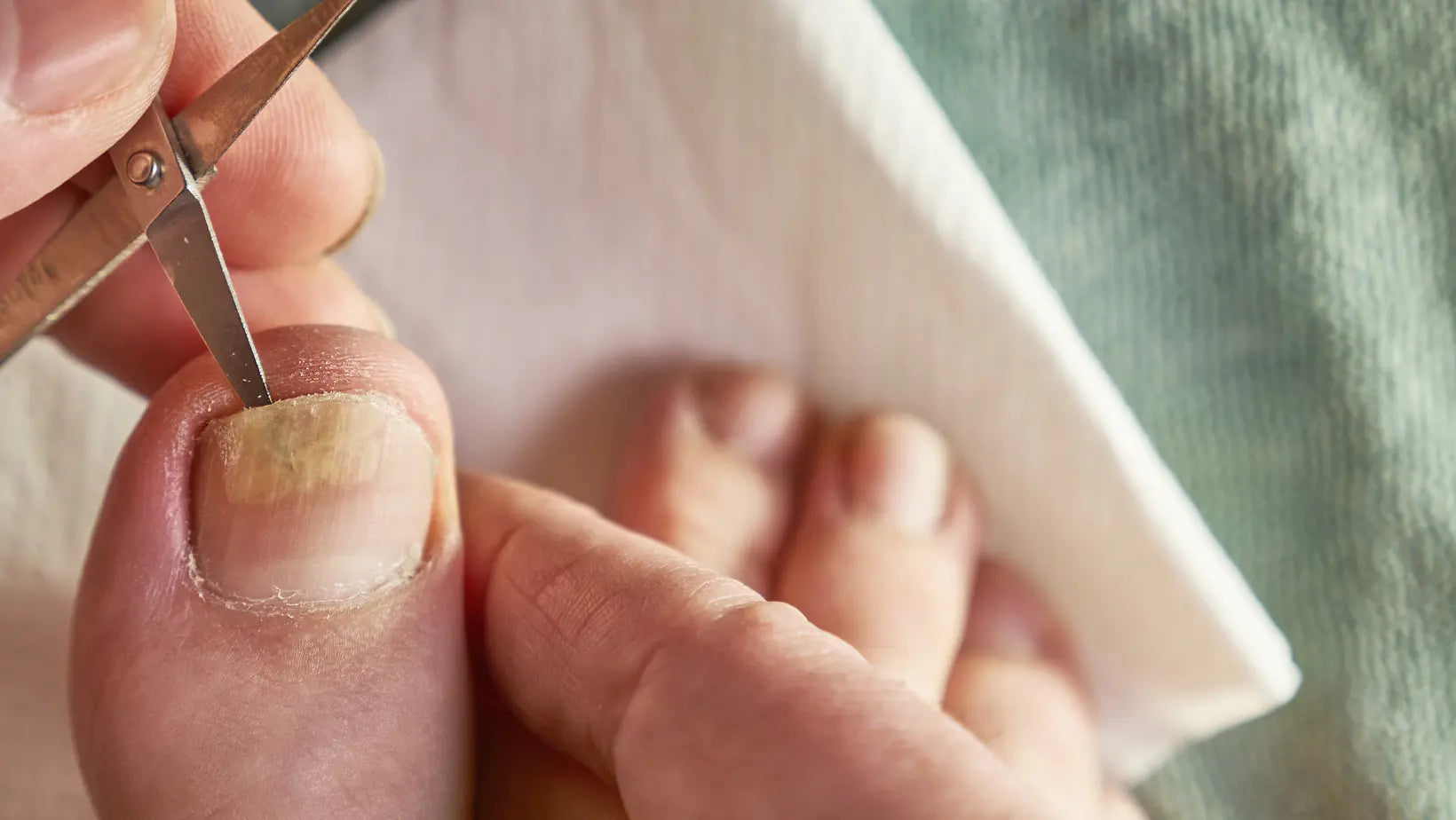
Summer is coming: Don't be ashamed of your feet anymore – Treat nail fungus
Have you ever noticed unusual changes in your nails, such as yellowing, thickening, or crumbling? If so, you might be dealing with nail fungus, a condition that is not only aesthetically unpleasant but also problematic for your health. Nail fungus, medically known as onychomycosis, can be more than just a visual nuisance — it can lead to pain, discomfort, and even more serious infections if not properly treated. As summer approaches and you prepare to show more skin, it is essential to address this issue to enjoy the beach, pool, and sandals without embarrassment or discomfort. Early intervention will not only improve your nail health but also help you avoid the spread of infection and long-term complications. Today, we will explore what you can do to ensure your feet are ready to shine this summer.
What is a nail fungus?
Definition of onychomycosis

Onychomycosis, commonly known as nail fungus, is a fungal infection that affects the nails of the hands and, more frequently, the feet. It is caused by various types of fungi, including dermatophytes, molds, and yeasts, which invade the nail, nail bed, and sometimes the surrounding skin.
Development and impact of nail fungus
Fungi thrive in warm, moist, and dark environments, which makes closed and damp footwear a conducive environment for their development. The infection usually starts at the edge of the nail, which may yellow, thicken, or crumble, gradually spreading towards the base of the nail and deep into the nail bed. As the fungi spread, the nails can become brittle, have an irregular texture, and become painful. If left untreated, onychomycosis can lead to permanent nail deformities and can affect the ability to perform daily activities, such as walking or wearing certain types of footwear.
Symptoms of nail fungus

The main signs and symptoms of onychomycosis include:
- Color changes of the nail, usually yellow, brown, or even black. One of the first and most obvious signs of nail fungus is a change in color. Nails affected by fungi can take on shades of yellow, brown, or even black. This symptom is due to the accumulation of debris under the nail, as a result of the detachment of the keratin layer of the nail from the nail bed.
- Thickening and deformation of the nail, which can become painful. As the infection progresses, the nails may become abnormally thick. Thickening is a reaction to fungal invasion and can make the nails harder to cut and care for. Excessive thickening can lead to discomfort or pain, especially when wearing shoes that put pressure on the affected nails.
- Nail fragility, with a tendency to detach from the nail bed. Nails infected with fungus often become brittle and can easily crumble at the edges. This is a consequence of the weakening of the nail structure by fungi. Nail fragility can lead to splitting or fragmentation of the nail, which can worsen the unpleasant appearance and expose the nail bed to other infections.
- A slightly unpleasant odor coming from the nails. Infected nails can emit an unpleasant smell due to the accumulation of bacteria and fungi under the nail.
Early recognition of these symptoms is crucial to start appropriate treatment and to prevent the spread of the infection. Effective treatments can limit nail damage and help restore its healthy and well-groomed appearance, essential for comfort and self-confidence, especially in the summer months when feet are more exposed.
How to tell if you have a nail fungus
Early identification of nail fungus is crucial to start appropriate treatment and prevent the spread of the infection. Here are some steps you can follow to recognize the signs of nail fungus and determine when it is necessary to consult a doctor:

Step 1: Inspect the nail color
Regularly examine your nails to check for any changes in their color. Healthy nails should have a uniform color and be translucent. If you notice yellowish, brown, or even whitish spots, this may be a sign of nail fungus.
Step 2: Check the texture and thickness of the nail
Feel the texture of the nail. Nails infected with fungus can become thick, hard, and may have an irregular texture. Also, if the nail easily detaches from the nail bed or crumbles, these are clear signs of a possible fungal infection.
Step 3: Monitor nail fragility and shape
Watch for any changes in the shape of the nail or if it becomes fragile and breaks easily. A healthy nail should be strong and maintain a consistent shape. Deformations or excessive thinning may indicate the presence of a fungal infection.
Step 4: Pay attention to signs of discomfort
Any sensation of pain, burning, or itching around the nails can be a sign that fungi have started to affect the area. Also, an unusual smell can be an indicator of nail fungus.
Step 5: Consult a doctor
If you notice one or more of these symptoms, it is essential to consult a dermatologist or a podiatrist. They can correctly diagnose the condition and recommend the most appropriate treatment. Often, confirming the diagnosis may require a small nail sample, which will be examined in the laboratory to identify the exact type of fungus.

Recognizing the early signs of nail fungus and promptly consulting a doctor are essential steps for effective treatment and for maintaining the health and aesthetic appearance of your nails.
Prepare your feet for summer – Treat nail fungus
With summer approaching, it is essential to prepare your feet not only for the heat but also for the exposure that the season entails. Here are some practical tips to keep your feet healthy and free from nail fungus:
Personal care and rigorous hygiene
- Careful drying of the feet: Nail fungus loves moist environments, so make sure to dry your feet well, especially between the toes, after a shower or bath.
- Wearing appropriate footwear: Avoid wearing tight shoes and synthetic materials that do not allow the skin to breathe. Opt for sandals or open shoes that allow air circulation.
- Wearing absorbent socks: Choose socks made of natural fibers, such as cotton or wool, which absorb moisture and prevent the development of fungus.
- Avoid sharing shoes or towels: This can lead to the transfer of fungus from one person to another.
Prevention of reinfection
- Disinfection of footwear and care accessories: Use antifungal sprays for footwear and ensure that all pedicure tools are properly sterilized.
- Regular foot check: Regularly inspect your nails and feet for any signs of reinfection and act quickly at the first signs of fungus.
Nail fungus treatment: Cleanail from the Royal Rich range
A natural and effective treatment for combating nail fungus is the Cleanail solution from Royal Rich. This product uses the power of essential oils to treat and prevent fungal infections.

Composition of the Cleanail solution:
- Thyme essential oil: Known for its strong antifungal properties, thyme oil actively fights the fungi responsible for nail fungus.
- Clove essential oil: This oil not only has anti-inflammatory and antiseptic properties, but also helps alleviate pain and discomfort associated with nail fungus.
- Lemon essential oil: Known for its purifying properties, lemon oil improves the appearance of the nail and helps restore the nail's natural health.
Mode of action
These essential oils work together to eliminate nail fungus, revitalizing and restoring the health of the affected nail. Cleanail not only treats the symptoms of the fungus but also helps prevent the spread of the infection and strengthens the nails against future fungal attacks. Regular use of the Cleanail solution can bring significant improvements, allowing you to enjoy summer with confidence and without worries about the health and appearance of your feet.
In conclusion, treating nail fungus is essential not only for the health of your feet but also for your comfort and confidence during the summer season. Since summer brings opportunities to wear open footwear and participate in various outdoor activities, it is crucial to prepare your feet before exposing the affected nails. With proper and timely treatment, you can avoid physical discomfort and the embarrassment that might arise in social situations.
Don't let nail fungus ruin your summer plans! Act now to treat and prevent this uncomfortable condition. Try Cleanail solution from Royal Rich, a natural and effective method that uses the power of essential oils of thyme, clove, and lemon to fight nail fungus.



Leave a comment
This site is protected by hCaptcha and the hCaptcha Privacy Policy and Terms of Service apply.